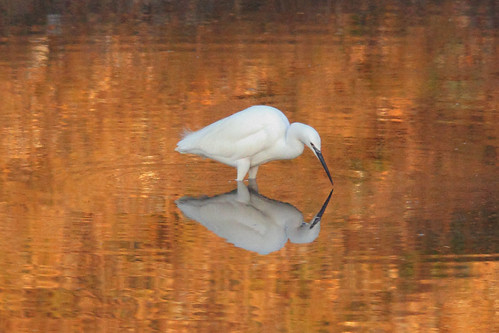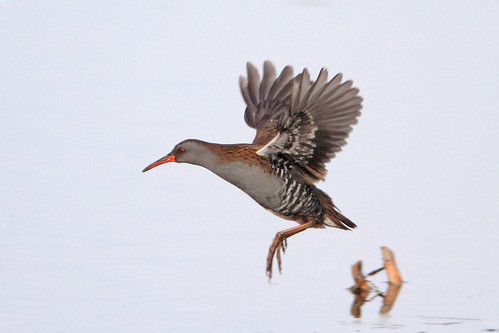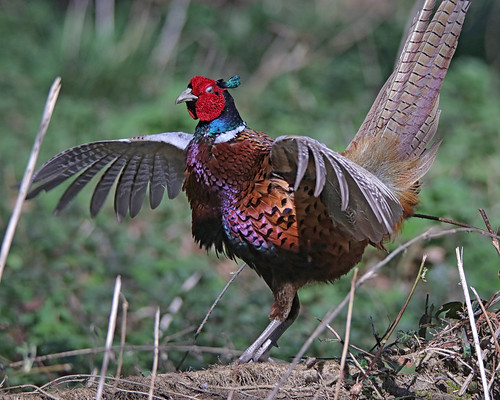But enough of all that; here are some highlights.
January
Photographers often rhapsodise about the "golden hour" just before sunset, and it doesn't get much more golden than this:
February
A Water Rail breaks from cover at Grove Ferry:
March
This colourful Pheasant took it upon himself to greet visitors to the Stodmarsh car park:
April
A smart Shelduck flies overhead at North Foreland:
May
A dull and drizzly May Day at Grove Ferry was livened up by this magnificent Kingfisher (one dive, one fish caught, one lucky photographer):
Later in the month, a decent view (for a change) of a Cuckoo:
June
The dragonflies at Grove Ferry / Stodmarsh attracted lots of visitors, including this dashing Red-footed Falcon:
July
Fortunately there were still plenty of dragonflies left after the Red-footed Falcon departed, including this Norfolk Hawker (aka the Green-eyed Hawker):
August
Lots to see in North Yorkshire, including Red Grouse:
...and the famous Gannets of Bempton Cliffs:
Back in Kent, a relative newcomer to Grove Ferry, a Willow Emerald Damselfly:
September
Some drastic Photoshopping saved this image from the bin. The Marsh Harrier changed direction so suddenly I cut off half of the upper wing and had to clone it from the other one. I wouldn't normally do this much work to an image, but I think in this case it was worth it:
October
Fortunately my reflexes were a little better when this Kestrel made a quick getaway:
November
After seeing a Red-throated Diver in 2014 and a Great Northern Diver in 2015, I wondered how many years I'd have to wait to see a Black-throated Diver in Ramsgate Harbour. Turns out it was only two:
December
Another new visitor to Ramsgate Harbour, an Iceland Gull:
The year started with a Little Egret against a golden backdrop, so it seems fitting to end it with its larger cousin, a Great White Egret, looking for fish in front of the golden reeds of Grove Ferry:
No autofocus was used in the making of these pictures.


















